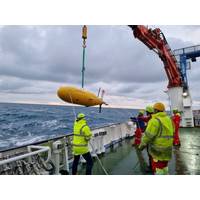
Project Trio Looks at the Sea Life, Carbon Storage Connection
The Natural Environment Research Council (NERC) BIO-Carbon programme announced funding a trio of projects that aims to investigate how marine organisms contribute to storing large amounts of carbon dioxide in the ocean. While marine organisms play a critical role in storing carbon in the ocean, recent evidence suggests that climate models are not fully accounting for their impact, which could hinder predictions of the ocean’s role in future carbon storage.Project 1:The PARTITRICS Project, using shipboard observations and autonomous underwater vehicles (AUVs) this project will seek to answer how
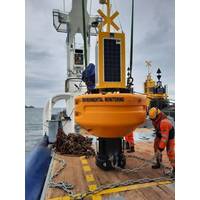
OSIL Buoy for Dublin City University Project
A multidisciplinary data buoy platform manufactured by Ocean Scientific International Ltd (OSIL) has been installed in Dublin Bay as part of the PREDICT multidisciplinary project. This project will provide a coordinated program of coastal ocean observations that will be used to validate, calibrate and extract as much information as possible from satellite earth observation data as an experimental proof of concept with the aim of generating AI models that can be used to predict environmental change in a range of environments.The 1.9m OSIL Fulmar buoy is recording and transmitting a variety of

Expedition Taps New Tech to Check Deep-Sea Coral Health
Scientists aboard Schmidt Ocean Institute's R/V Falkor (too) have returned from an expedition to study the impact of climate change on deep water corals. Scientists from the mainland U.S. and Puerto Rico found greater biodiversity than previously known in Puerto Rican waters and may have identified several suspected new species of corals, collecting over 300 samples across 75 different species. Research will be conducted in the coming months to identify and name any new species.The 20-day expedition included researchers from Woods Hole Oceanographic Institution (WHOI), Lehigh University
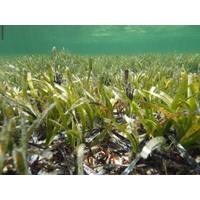
4500 Years Old & 180km: World's Largest Known Plant Discovered in Shark Bay
; of the seagrass Posidonia australis in the shallow, sun-drenched waters of the World Heritage Area of Shark Bay in WA, is detailed in a new study published in Proceedings of the Royal Society B.Evolutionary biologist Dr. Elizabeth Sinclair, from UWA’s School of Biological Sciences and the UWA Oceans Institute, is a senior author of the study and said the project began when researchers wanted to understand how genetically diverse the seagrass meadows in Shark Bay were, and which plants should be collected for seagrass restoration.“We often get asked how many different plants are growing
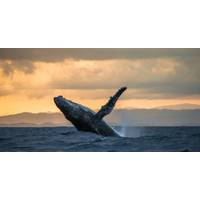
Reseach Finds Fin Whale Songs Shed Light on Migration Patterns
A Curtin University-led research team has uncovered valuable information on the migration patterns of the fin whale, as well as where they breed and feed, which will help aid in the monitoring and protection of the species.Published in Frontiers in Marine Science, the research team monitored 285,000 hours of underwater sound recordings from 15 locations off Antarctica and Australia between 2002 and 2019 and identified two migratory pathways used by the species – from the Indian sector of Antarctica to the west coast of Australia and from the Pacific sector of Antarctica to the east coast of
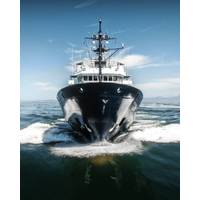
Schmidt Ocean Institute Donates Research Vessel to Italian Science Agency
Founders Eric and Wendy Schmidt donate research vessel Falkor to Italy’s science agency to conduct ocean science in the Mediterranean and beyond.Schmidt Ocean Institute are donating its 82.9-m research vessel Falkor to the Italian Consiglio Nazionale delle Ricerche (CNR), expanding the science agency’s fleet of research vessels and continuing Falkor’s legacy of conducting ocean science.The ship will be renamed to Gaia Blu.Originally built in 1981 as a fishery protection vessel, the ship was acquired by Eric and Wendy Schmidt in 2009 when they founded Schmidt Ocean Institute. Following
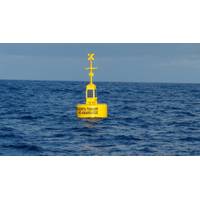
MSM Ocean, Sonardyne Partner on Tsunami Early Warning System
MSM Ocean and Sonardyne agreed to team on the supply of a complete solution for warning coastal communities of a tsunami.The agreement combines MSM Ocean’s experience in oceanographic measurement buoys, on-board data processing and telecommunications with Sonardyne’s precise deep water pressure measurement and acoustic through-water telemetry capabilities. Together, these allow minute changes in deep water pressure at the seafloor that indicate a tsunami to be reliably detected, triggering a direct alert to national emergency organisations via acoustic and satellite communications
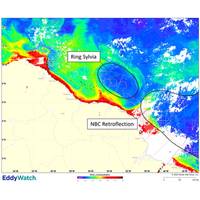
First North Brazil Current Ring of 2022 Forms Offshore Suriname and French Guiana
Woods Hole Group’s (WHG) EddyWatch team monitors and reports on Ring Sylvia*, the first North Brazil Current (NBC) ring to form this year.(*Sylvia Alice Earle, Ph.D., is an American marine biologist, oceanographer, author, and lecturer known for her research on marine algae and threats to marine life, such as overfishing and pollution.)Ring Sylvia shed from the NBC on January 18, 2022 near 08°30’W, 53°00’W, offshore eastern Suriname (Figure 1). The ring is oriented northwest to southeast, is 520 km across, and spans water depths from 50 m to 5,000 m. Following separation
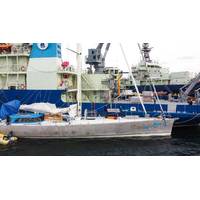
Argo Float Release Via Sailboat Sets Sustainability Mark
journey comes on the heels of the 2021 UN Climate Change Conference in Glasgow, Scotland, with its urgent message of curbing the planet’s warming emissions. This innovative collaboration between intergovernmental, public, and private sectors also takes place within the United Nations Decade of Ocean Science for Sustainable Development, and is funded by NOAA, WHOI,Fisheries and Oceans Canada and Euro-Argo.Click here to read the related story "Inside the GO-GBC Array Project to Monitor Ocean Health"



 February 2024
February 2024





